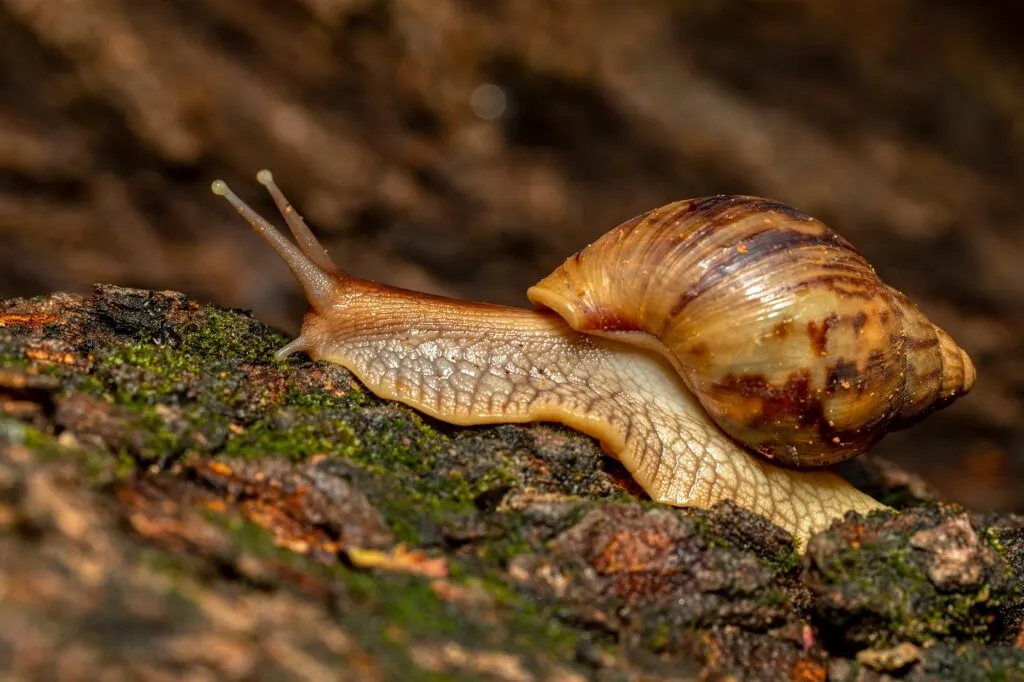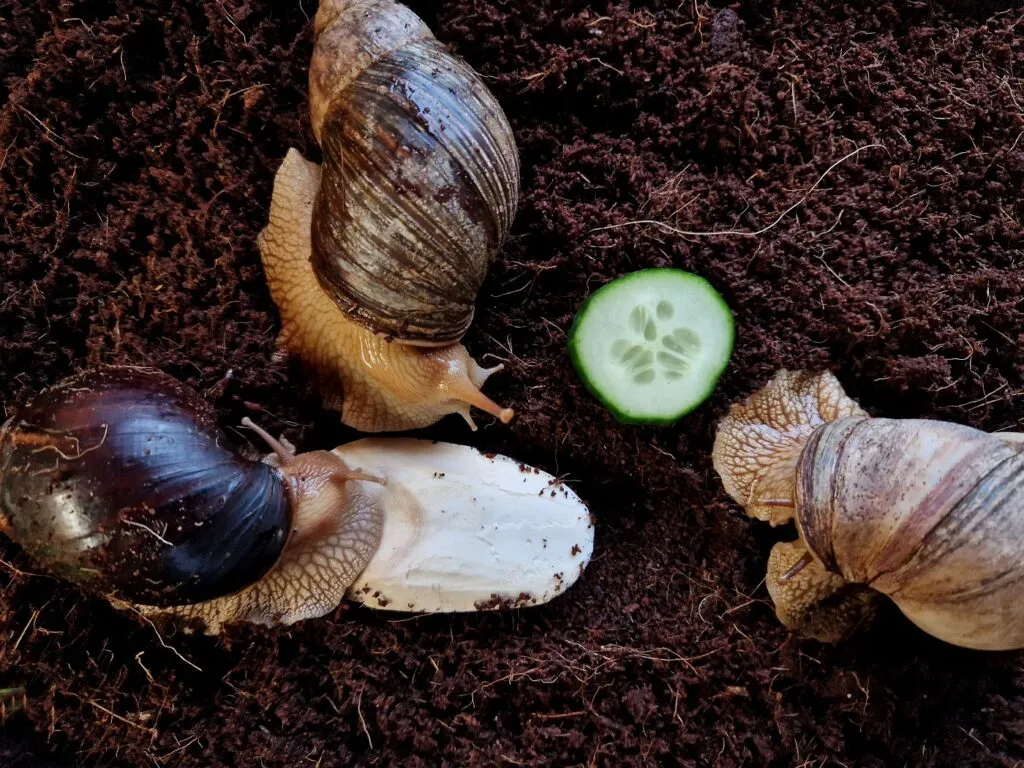The Terrarium
These animals are kept in terrariums. The ideal terrarium size and temperature depend on the snail species and their origin. The Achatina achatina, given its larger size, requires quite a bit of space. Accordingly, a more spacious terrarium is needed if more inhabitants will reside there. For a group of five snails, the terrarium size should be at least 80 x 50 x 50cm. The daytime temperature should be around approx. 29°C, and should not fall below 24°C at night. The Achatina fulica can already live in a group of up to eight in a 80 x 50 x 50cm terrarium. Here, the temperature is approximately 25°C during the day and should be 22°C at night.
To maintain constant day and night temperatures, you can integrate heating mats and heat lamps. Always ensure to monitor the temperatures to avoid fluctuations, which can quickly become dangerous for the snails. Moreover, appropriate humidity within the terrarium should be maintained. This can be done by moistening the terrarium with a spray bottle. It’s best to obtain a hygrometer to measure humidity levels, which also vary between species and their origins. For instance, adult Achatina achatina require between 85% and 90% humidity, while Achatina fulica thrive at around 80%.
For the substrate, you can use soil or fine humus. It’s also advisable to equip the terrarium with branches and plants. Cork branches, various woods and mosses are suitable. Since the snails will nibble on the plants, you should replace them regularly for longer usage. Ideally, incorporate a water dish in the terrarium for the creatures to drink from and bathe in.
Socialising
Giant African Land Snails should always be kept with several of their kind. Other than with their species, Achatinidae should not be housed with other animals, such as frogs, in a terrarium. The snails eat everything, making the chances for the frog to have a long life slim.
Lifespan: How long do Giant African Land Snails live?
In terrariums, Giant African Land Snails live for around 10 years. They are hardy and straightforward to maintain given good feeding and care.


